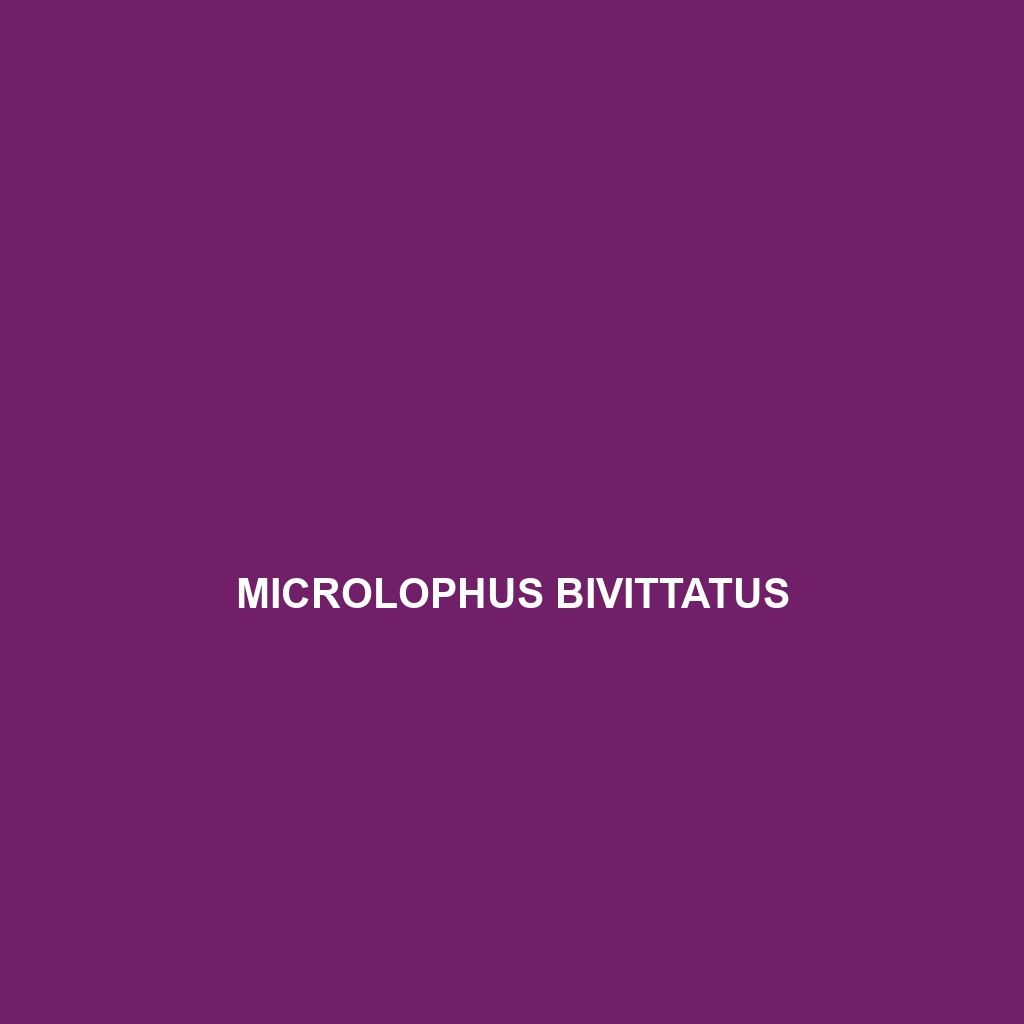Common Name
Microlophus bivittatus
Scientific Name
Microlophus bivittatus
Habitat
Microlophus bivittatus, commonly known as the two-striped lava lizard, is primarily found on the Galápagos Islands, particularly on the island of Santa Cruz. These reptiles thrive in a variety of habitats including semi-arid zones, coastal regions, and rocky areas that provide ample sunlight and hiding spots. The climate on these islands is predominantly warm and tropical, with humidity levels fluctuating seasonally. The unique combination of volcanic rock landscapes and sparse vegetation contributes to their preference for open, sunny environments where they can bask and hunt for prey.
Physical Characteristics
The two-striped lava lizard is a small lizard, typically measuring between 15 to 26 centimeters (6 to 10 inches) in length. Its most distinguishing physical feature is its vibrant coloration, which generally includes shades of brown, gray, or olive green, accented by two prominent light stripes running along its back. These stripes serve as camouflage, allowing the lizard to blend into its rocky surroundings effectively. Its slender body, elongated tail, and sharp claws facilitate climbing and quick movements, making it adept at navigating its rugged habitat.
Behavior
Microlophus bivittatus exhibits fascinating behaviors that are crucial for its survival. Known to be diurnal, these lizards are most active during the day, basking in the sun to regulate their body temperature. Social interactions are common, especially during mating seasons when males engage in territorial displays, including push-ups and colorful throat displays to attract females. Additionally, they demonstrate a unique basking behavior where they often alternate resting in sunlit areas and shaded spots to maintain optimal thermoregulation. While they are primarily solitary creatures, they can occasionally be found in small groups, particularly in areas abundant with food resources.
Diet
Microlophus bivittatus is primarily insectivorous but exhibits an omnivorous dietary pattern when the opportunity arises. Their diet mainly consists of small insects such as ants, beetles, and grasshoppers, making them effective predators in their ecosystem. They may also consume plant material, such as leaves and fruits, especially during periods when insect populations are low. This flexibility in diet not only aids their survival but also illustrates their adaptability to changing environmental conditions.
Reproduction
The reproductive cycle of Microlophus bivittatus typically occurs during the warmer months, aligning with the peak availability of food resources. Males engage in elaborate courtship displays to attract females, which often include a series of visual signals and physical displays. After mating, females lay clutches of 2 to 6 eggs in secluded sandy areas. The incubation period usually lasts around 60 to 90 days, depending on environmental conditions. Young lizards emerge fully formed and independent, with minimal parental care provided after hatching. This reproductive strategy allows for a higher survival rate of offspring in the wild.
Conservation Status
Currently, Microlophus bivittatus is classified as of “Least Concern” on the IUCN Red List. However, this status is subject to change given the ongoing threats posed by habitat degradation and introduced species such as rats and cats, which can prey on eggs and juvenile lizards. Conservation efforts are crucial in preserving their natural habitats and ensuring sustainable populations, particularly in protected areas of the Galápagos Islands where these unique reptiles can thrive without undue human interference.
Interesting Facts
Microlophus bivittatus possesses several intriguing adaptations that enhance its survival. One of the most notable is its ability to change color slightly in response to different temperatures, which aids in thermoregulation and camouflage. Furthermore, these lizards can often be seen performing rapid escape movements, darting across rocky surfaces to evade potential predators effectively. This rapid agility makes them fascinating subjects for behavioral studies and highlights the incredible resilience of life in the Galápagos ecosystem.
Role in Ecosystem
As both predators and prey, Microlophus bivittatus plays a significant ecological role in its environment. By feeding on insects, they help regulate pest populations, thus contributing to the overall health of their ecosystem. In turn, these lizards serve as a food source for larger predators, such as birds and snakes. Their presence is indicative of a balanced ecosystem, making them an important species to monitor for ecological health. Conservation initiatives aimed at preserving the Galápagos Islands’ unique biodiversity are essential not just for Microlophus bivittatus but for the many species that depend on these ecosystems.
